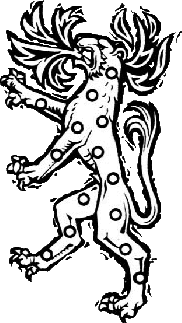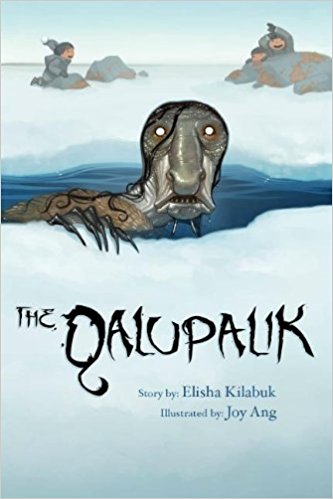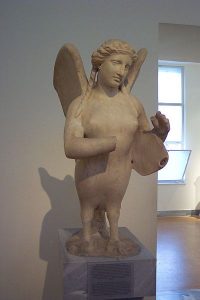
Panther
I don’t exactly mean the big cat – but in some ways I do.
History
A Panther is monster from medieval Europe 1)from a time when people did not understand what they truly were with magical powers, such as its coat being all the colours of the rainbow and being able to call animals to it.
Some stories call this monster gentle but all tell us how it awakens and roars, emitting a sweet smell that calls animals to it to become its food. The only animals that won’t come to its call are dragons because they are scared of the panther, and then the panther falls asleep until it is hungry again. But since it only sleeps once it is full then it most eat all the animals that come to him, there for he call them to there doom that don’t seem very gentle.
The female Panther only gives birth once because her young eat their way out of her, like some sharks do. This is somewhat at odds with the supposedly peaceful nature of the Panthers, suggesting that the myth may be an amalgamation of different stories.
This story have been used as a metaphor by the Christians for Christ and the devil and Christ’s story of rebirth, the beautiful panther is Christ and the devil is the dragon. It told of Christ dying as the panther sleeps, and when dead he defeats the devil (the dragon) which is why the dragon is scared of him. He is then reborn 3 days later and calls all the animals to him with his beautiful roar. This a case of Christians taking an old story and trying to make it theirs, like having Hercules be a version of Samson, but it is a strange version because the dragon stays away from the panther and because when the panther call the animals to him he eats them, not generally considered the way that Christ will behave.
These stores of it both the christian and nonchristian meant that people gave this beast magical powers and made it into more than it was, we tend to do this to things we don’t know about because of fear of the unknown. But it can sometimes make it scarier than it is, since these do eat animals and could eat human it might be due.
Nowadays we no longer see it as a monster but the beautiful animals which we now know is not its own species but any slender big cat, like Leopards, with too much melanin in their fur in the case of the black panther (which is more commen) and a lack of it in the white panther, so a panther is a big cat with some form of mutation in their fur usually making it be without marking on it. The white panther is what is described in most of the old stories as the monster is said to be white, rainbow coloured or to shine like the sun. which is interesting since it is the black panther that is more common and that most people think of – and was, of course, the inspiration for things like the superhero Black Panther, as well as the Black Panther political movement.
Physiology
Due to the time period this monster was believed in not all the images of it were the same, mostly it is shown as a big cat but there some odd ones out there one like an image of a donkey the another that has horns. I’m just looking at the standard version
- The head of a big cat with small eyes and a mouth full of sharp teeth.
- With slim body of a big cat like a leopard – not stocky like a lion.
- It stand on all fours on long slender legs – but can stand upright when it wishes.
- Large paws with sharp claws.
- Covered from head to toe in beautiful soft fur of white or rainbow or of golden sun light.
Ideas
- It come be used it a set as something that is treated like a deity, maybe a god of nature that only eats and sleeps.
- It seems similar to the Tarrasque with how it acts and there be no information how to kill it. But it doesn’t roam the land eating all as it goes, it waits for food to come to it. Perhaps the Tarrasque is what happens when one of these doesn’t get fed – or perhaps it’s instead what happens if they eat a dragon.
- How often the Panther must eat varies, but one version has it eating every 3 days. Perhaps the sweet breath makes the area nearby particularly fertile to support it.
Where to find more
https://en.wikipedia.org/wiki/Panther_(legendary_creature)
http://bestiary.ca/beasts/beast79.htm
https://en.wikipedia.org/wiki/Black_Panther_(comics)
https://a-z-animals.com/animals/panther/
References
| 1. | ↑ | from a time when people did not understand what they truly were |



